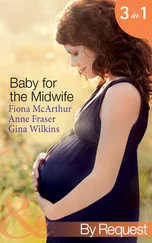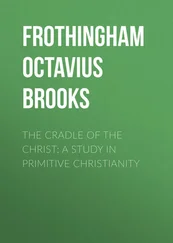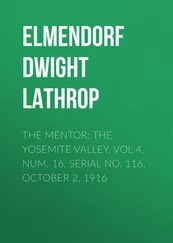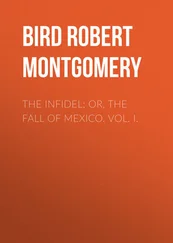February 15. – We made a late start, for Mohammed has lost his head again and is playing the fine gentleman, as he did at Haïl, afraid or ashamed to be seen by his new acquaintances doing any sort of work. Instead of helping to pack or load the camels, he would do nothing but sit on the ground playing with his beads, and calling to Awwad to saddle his delúl, – airs and graces which, I am glad to see, are thrown away on the Ketherin, who, as Bedouins, care little for the vanities of life. Even when started, we did not get far, for it began to thunder and lighten, and presently to rain heavily, so that Wilfrid ordered a halt at half-past ten. We have now come to the great birkehs which are full of water. They stand in a valley called the Wady Roseh, from a plant of that name which grows in it, and is much prized as pasture for both camels and horses. There are two tanks near us, one round, the other square, and both of the same fashion as the first we saw. We have been examining the construction and find that the walls were originally built hollow, of stone, and filled up with concrete. This is now as hard as granite, and has a fine polish on the surface. The water is beautifully clear and good. The largest of the tanks is sixty-four yards by thirty-seven, and perhaps twelve feet deep. There is a ruined khan of the same date close by, and Wilfrid has discovered an immense well ten feet wide at the mouth and very deep. All these were constructed by Zobeydeh, the wife of the Caliph Haroun er-Rashid, who nearly died of thirst on her way back from Mecca and so had the wells and tanks dug. Wilfrid believes that no European has visited them before, though they are marked vaguely on Chesney’s map. A wild day has ended with a fine sunset. Dinner, not of stalled ox, nor of herbs, but of boiled locusts and rice, with such bread as we can manage to make of flour well mixed with sand.
Mohammed, who has been in the agonies of poetic composition for a week past, has at last delivered himself of the following kasíd or ballad, which I believe is intended as a pendant to the original Ibn Arûk kasíd, with which he sees we are bored.
KASÍD IBN ARÛK EL JEDÍDE
Nahárrma min esh Sham, el belád el bayíde,
Némshi ma el wudiân wa el Beg khaláwa.
Wa tobéyt aéla Jôf, dar jedíde.
Yaáz ma tílfi ubrobok khaláwi.
Nahárret ’Abu Túrki, aálumi bayíde,
Dábakha lil khottár héyle semáne.
Ya marhába bil Beg wa es Sitt Khatún.
Talóbbt bíntu gal jaátka atíye.
Wa siághahu min el Beg khámsin mía.
Khatún, ya bint el akrám wa el juwádi.
Khatún, ya bint el Amáva wa el kebár.
Ya Robb, selémli akhúi el Beg wa es Sitt Khatún.
Ya Robb, wasálhom diyar essalámi,
Конец ознакомительного фрагмента.
Текст предоставлен ООО «ЛитРес».
Прочитайте эту книгу целиком, купив полную легальную версию на ЛитРес.
Безопасно оплатить книгу можно банковской картой Visa, MasterCard, Maestro, со счета мобильного телефона, с платежного терминала, в салоне МТС или Связной, через PayPal, WebMoney, Яндекс.Деньги, QIWI Кошелек, бонусными картами или другим удобным Вам способом.
Abbas Pasha’s Seglawieh is reported to have had two foals while in Egypt; one of them died, and the other was given to the late King of Italy, and left descendants, now in the possession of the present king.
We measured one, a pollard, thirty-six feet round the trunk at five feet from the ground.
Rassam, who has been digging at Babylon, informs me that these inscriptions are in the ancient Phœnician character. It would seem that the Phœnicians, who were a nation of shopkeepers, were in the habit of sending out commercial travellers with samples of goods all over Asia; and wherever they stopped on the road, if there was a convenient bit of soft rock, they scratched their names on it, and drew pictures of animals. The explanation may be the true one, but how does it come that these tradesmen should choose purely desert subjects for their artistic efforts – camels, ostriches, ibexes, and horsemen with lances. I should have fancied rather that these were the work of Arabs, or of whoever represented the Arabs, in days gone by, anyhow of people living in the country. But I am no archæologist.
It was to Taybetism that Abdallah ibn Saoud fled ten years ago when he was driven by his brother out of Aared, and from it that he sent that treacherous message to Midhat Pasha at Bagdad which brought the Turks into Hasa and broke up the Wahhabi Empire.
Red is said to be the female and green the male, but some say all are green at first and become red afterwards.
Compare Mr. Palgrave’s account.
Compare Fatalla’s account of the war between the Mesenneh and the Dafir near Tudmor at the beginning of the present century.
Belkis is the name usually given by tradition to the Queen of Sheba.
I have since been told by dentists that the fact of a third set of teeth being cut in old age is not unknown to science.
![Anne Blunt A Pilgrimage to Nejd, the Cradle of the Arab Race. Vol. 2 [of 2] обложка книги](/books/750183/anne-blunt-a-pilgrimage-to-nejd-the-cradle-of-the-cover.webp)











